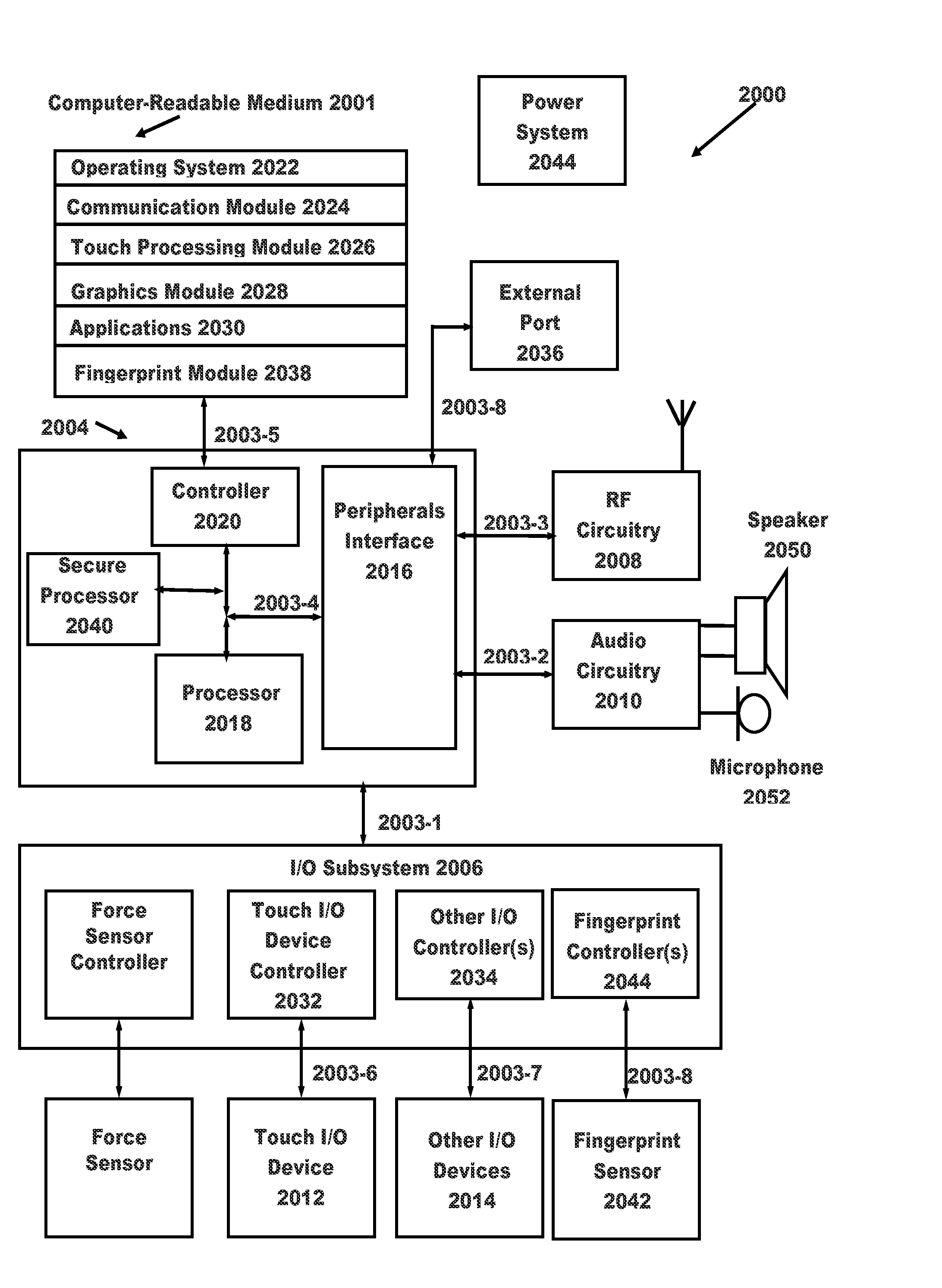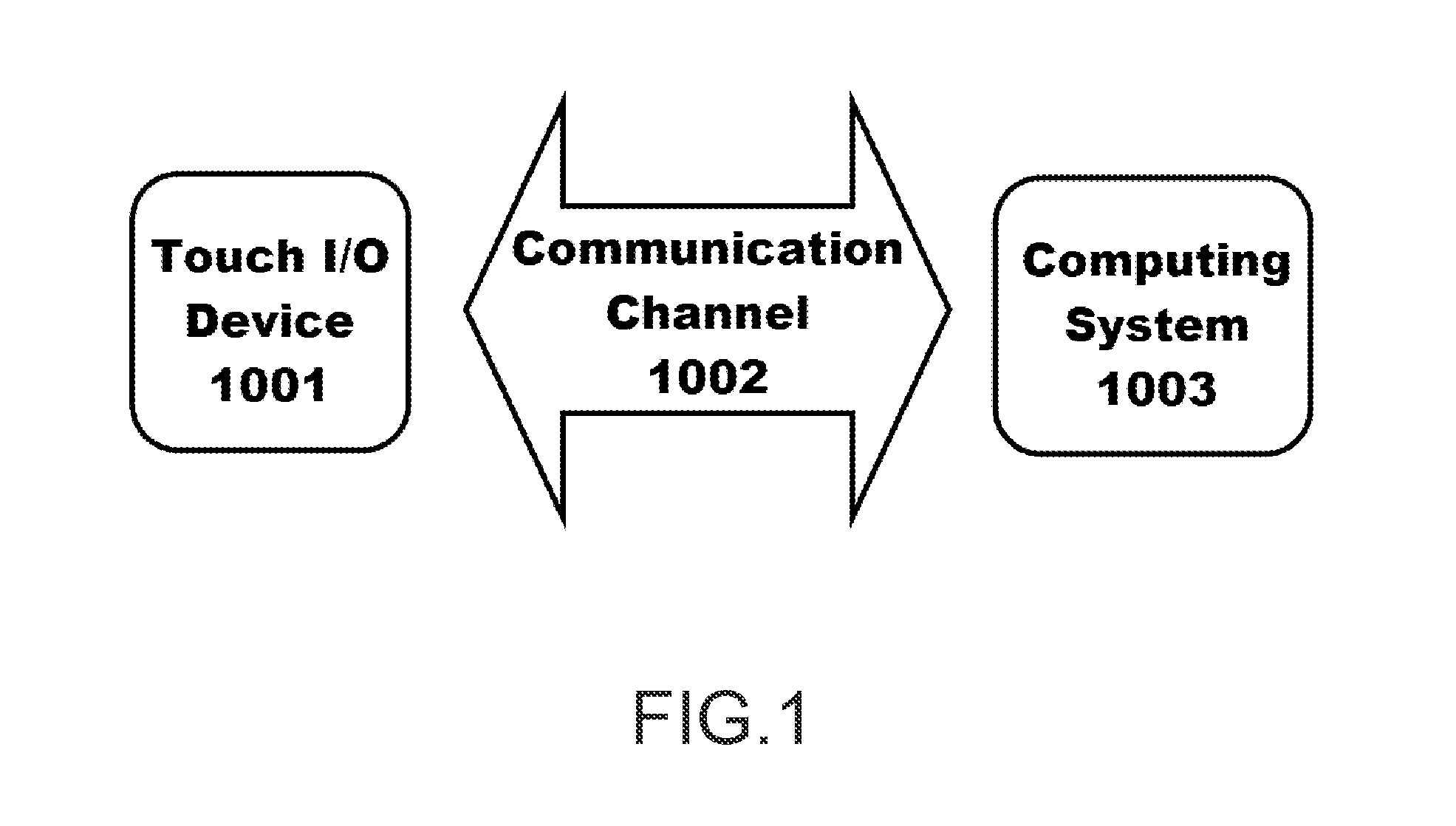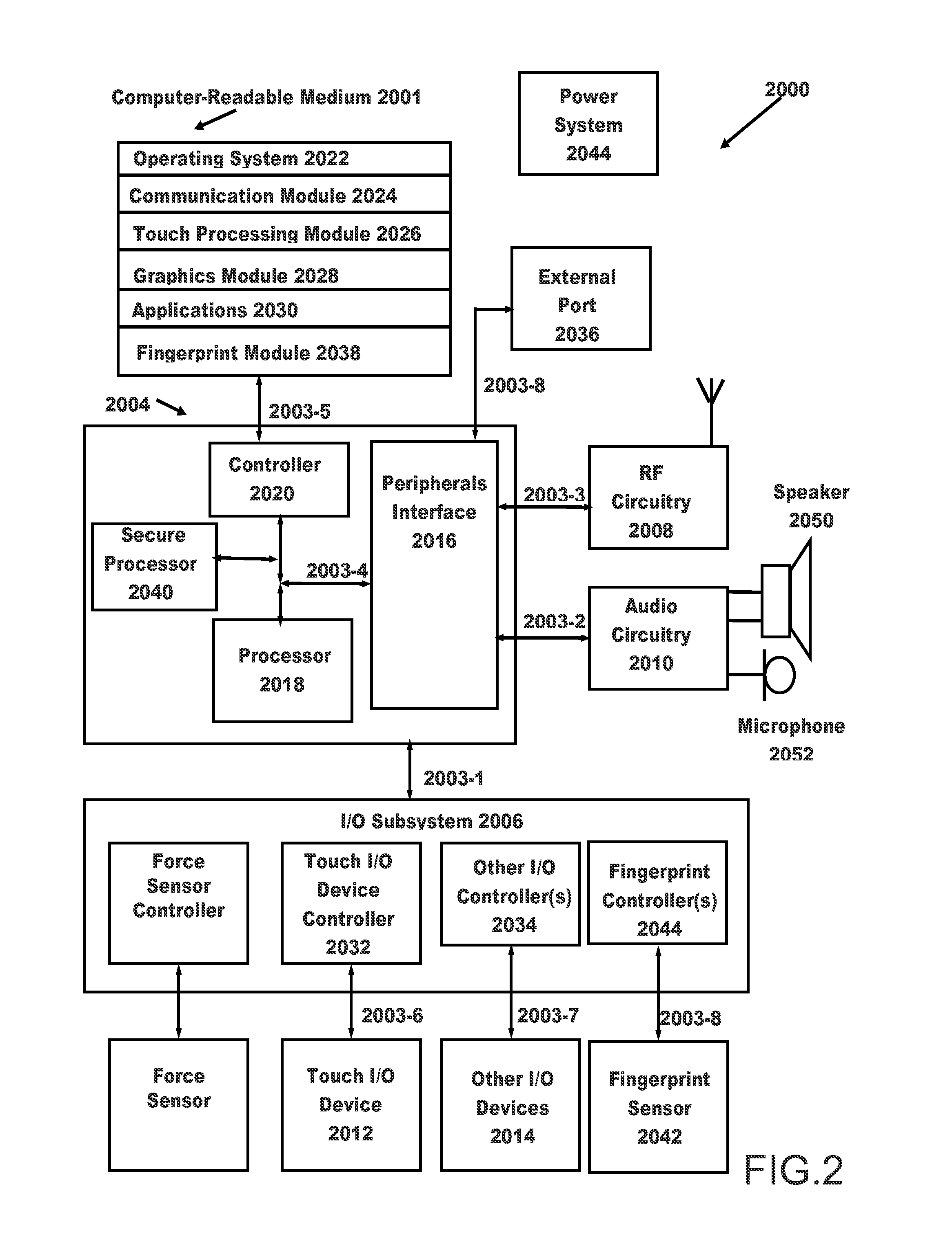Force Sensing Using Bottom-Side Force Map
a force map and force sensing technology, applied in the field of force sensing, can solve the problems of application program inability to provide functions, touch devices with less capabilities, and one or more difficulties for touch devices
- Summary
- Abstract
- Description
- Claims
- Application Information
AI Technical Summary
Benefits of technology
Problems solved by technology
Method used
Image
Examples
example force
[0056 Sensor
[0057]FIG. 3 shows a conceptual drawing of a force sensor including a dual-layer cover glass.
[0058]In one embodiment, the touch I / O device 2012 includes a frame 3010 and a midframe 3015 coupled to the frame 3010. The frame 3010 can be coupled to a spacer 3020, which is coupled to a cover glass (CG) 3025 and which can hold the cover glass (CG) 3025 substantially in place with respect to the frame 3010. In one embodiment, the cover glass (CG) 3025 can have approximately 500 microns of thickness.
[0059]In one embodiment, a device stack can be coupled below the cover glass (CG) 3025. In one embodiment, the touch I / O device 2012 can include a dual indium tin oxide (DITO) and pressure sensitive adhesive (PSA) layer 3030 positioned below the cover glass (CG) 3025. In one embodiment, the dual indium tin oxide (DITO) and pressure sensitive adhesive (PSA) layer 3030 can have approximately 378 microns of thickness. In one embodiment, the dual indium tin oxide (DITO) and pressure sen...
PUM
| Property | Measurement | Unit |
|---|---|---|
| Poisson's ratio | aaaaa | aaaaa |
| thickness | aaaaa | aaaaa |
| thickness | aaaaa | aaaaa |
Abstract
Description
Claims
Application Information
 Login to View More
Login to View More - R&D
- Intellectual Property
- Life Sciences
- Materials
- Tech Scout
- Unparalleled Data Quality
- Higher Quality Content
- 60% Fewer Hallucinations
Browse by: Latest US Patents, China's latest patents, Technical Efficacy Thesaurus, Application Domain, Technology Topic, Popular Technical Reports.
© 2025 PatSnap. All rights reserved.Legal|Privacy policy|Modern Slavery Act Transparency Statement|Sitemap|About US| Contact US: help@patsnap.com



